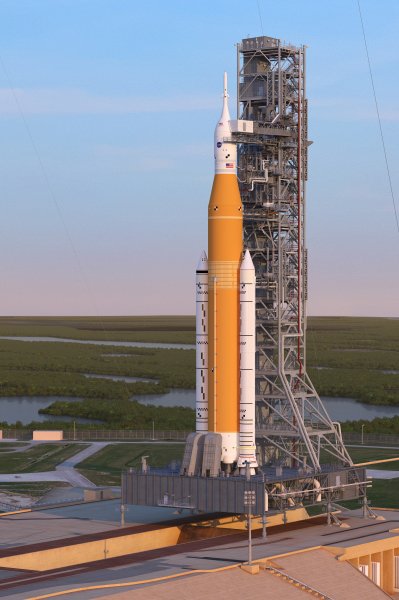Elon Musk's Starship outpaces NASA in the space race: here's why (video)
One of the most significant technological breakthroughs of last year occurred on October 13. Starship, developed by Elon Musk's SpaceX, is the largest and most powerful rocket in the world, launched into space from a Texas launch site. Its main stage, the Super Heavy booster (the upper stage is the spacecraft), reached an altitude of 65 km and returned at a speed exceeding that of sound. Before landing, the booster reignited its engines and slowed down until it hovered above the launch tower, from which it had taken off just 7 minutes earlier. For the first time, manipulators captured the massive booster. This demonstrated that Starship can be reused. This breakthrough marks a new milestone in the history of space exploration, and in this space race, NASA is already falling behind SpaceX, reports The Guardian.
The successful test of the Starship rocket system heralded the beginning of a new era of affordable heavy rockets, which could lower the costs of scientific research in space, experts say.
Elon Musk's company has already reduced the cost of launching payloads into low Earth orbit by a factor of ten. Once Starship, the most powerful rocket ever built and designed for reuse, is fully operational by the end of this year, further reductions in space flight costs are anticipated.
The Starship rocket is expected to be capable of launching into space every two to three weeks. SpaceX engineers have learned to recover and reuse the main stage of Starship and plan to do the same with its upper stage, the spacecraft, this year, experts believe.

A total of 25 flights are scheduled for this year, which is an astonishingly ambitious program. The advantages of Starship for scientists are clear. The cost of space missions could decrease even further, enabling research in space that scientists could not previously afford.
The success of Starship could jeopardize NASA's Space Launch System (SLS) booster. This extremely expensive rocket can only be used once. Each launch is estimated to cost billions of dollars, while launching Starship is priced at just $10 million. Many scientists predict that Starship will render the SLS unnecessary within a few years.

Elon Musk has high hopes for Starship, which are tied not only to his scientific aspirations but also to his plans to use the giant rocket to begin potential colonization of Mars. Last September, Musk promised that SpaceX would launch the first unmanned Starship missions to Mars within two years. If successful, crewed flights would follow four years later. Ultimately, Musk envisions a colony on Mars with a population of up to a million people within 30 years.
Some scientists are skeptical about Musk's plan, as the journey to Mars and the establishment of a colony on a planet that is nearly uninhabitable is a challenging task.